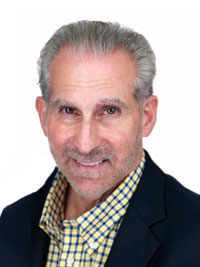 Sustainability
Sustainability
Shareholders consider sustainability of the companies they co-own a primary need, a right, and, frankly, an “entitlement.” It would seem reasonable that managers and employees would feel essentially the same. If the companies we’ve all invested in go belly up, then what? We must be alive to survive to be in the game.
Generally, sustainability refers to the ability and capacity to maintain, support, and endure. Responsible management of resources is a key ingredient for proper stewardship which creates and maintains sustainability. It’s clear and relatively simple: the Latin sustinere means tenere, to hold, and sus, up. Our companies, and the jobs they support, cannot “be held up” unless responsible, creative management operates round-the-clock.
Sustainability, responsible stewardship, and growth are the shareholder activist’s mantras. Quality control techniques, utilization review, asset allocation, and novel risk management strategies are just some of the structures that modern business has created to perfect products, and ultimately increase profit and insure sustainability.
Interestingly, in the manufacturing sector, giant strides were innovated in the mid-1980s to address error and variability in processes which produced actual physical products, not services provided by people whose perceptions and skills set are often rooted in their emotional functioning. The best and most successful Wall Street players have the courage, brains, and strength to stand alone when they believe in opportunity.
Motorola and Six Sigma
In 1986 Motorola developed Six Sigma methodology to improve quality and minimize error in their manufacturing operations and processes. Controlling variability was a key feature of Six Sigma. Soon this model became the rage throughout corporate America.
The term sigma originates from the Greek alphabet; it is actually the 18th letter of this ancient language. It means “mathematical sum.” A Six Sigma process is one whereby, literally, 99.99966% of the product is manufactured without defects. This is an astounding concept particularly since products are made by people, or robotics which are designed and serviced by people. The major goal is to control variance, and minimize error. Six Sigma strategies have been deployed throughout organizations in many, many markets.
Can Six Sigma Play on Wall Street?
Implementation of Six Sigma techniques has been a hard sell for the Street. Unlike many markets and industries, Wall Street thrives on variability, hunches, guts, cycles, volatility, bubble-mania, emotionality, instinct, and error. The culture of the Street embraces an inherent roller coaster mentality which is fueled by basic human emotions and other factors, including but not limited to: fear, greed, excitement, denial, panic, gluttony, money-lust, impulsivity, masochism, ego, image, power and control, grandiosity, narcissism, oxytocin arousal, short sellers, and hedge fund experts. It appears that Six Sigma techniques are counter-intuitive for the Street. Volatility, movement, crises (natural, or man-made) lay the foundation for “bets,” and ultimately trading which creates revenue, frequently without regard for profit or for loss. Action is action. Action drives markets.
Street Culture
After all, inherent in Street culture is the “madness of crowds,” and “extraordinary delusions.” Alfred Winslow Jones really hit a jackpot when he created the modern hedge fund in 1949. He used leverage to buy shares and short selling to manage risk. The direction of the market was far less important that the equity content of the portfolio. You just had to make the right picks. As long as movement occurs, money can be made. George Soros shorted the British pound September 16, 1992, and earned one billion dollars in a single glorious trading day!
“More Money than G-D”
Sebastian Mallaby’s recent book explores the “making of a new elite.” Mallaby lauds hedge fund players. He reveres these financier-entrepreneurs as having the talent to spot, observe, and act on market opportunities. They truly put their money where their mouth is. They have conviction and courage. In point of fact, the top 25 hedge fund managers earned a tad more than 25 billion dollars in 2009. Mallaby believes that volatility is good for the market. Action, movement, cycles, and trends are created which can then be capitalized on; all things being equal which is rarely the case.
The “Humanity” of the Street
Wall Street is run for and created by people; people with a variety of skill sets, cognitive capacities, and emotional drivers. They also come to work with psychological templates that are, if you will, imprinted from their early lives (whether they like it or not). Hence, variance and error are always omnipresent. How could they not be? To be human is to err. What’s needed is balance, and the capacity to build one’s internal gyroscope to ride out the incessant waves and storms of the Street. The all too human hands that work long and hard to make money at, or below, sea level in lower Manhattan need to be strong swimmers and survivors in order to stay afloat at surge points which are unpredictable and “bound to occur.”
Risk and error can never be fully controlled; people are the product on Wall Street, not jet engines, pharmaceuticals, or surgical instruments. Mathematical models and risk management strategies do have a place on the Street, and they provide guidelines and trend assessments, but they do not minimize risk to the .01% level or less. If they did we’d be a nation of Plutocrats, and a Knicks or Yankees ticket would probably cost a $100,000 and not even be court or field side.
People are Fundamental Emotional Beings
People are driven by emotions which are rocky by nature, and cognitive functions which aide information processing, memory, and perception. Bottom-line: the human factor, which is inherently laden with variance, can never be taken out of the equation. Six Sigma will have very hard time playing on the Street. Perhaps Street firms should invest more in human relationship management strategies, and better company wide emotional support systems. People sustain the corporation in the financial services sector, and in every industry frankly.
Human beings are not “mathematical sums.” Mathematics can enlighten us and explain many things. So far, dignity, courage, spirit, and honor have not been proven mathematically.
The neuropsychology of economics and behavioral finance will be discussed in forthcoming posts.
To contact Christopher Bayer directly, please email Christopher.Bayer@TheShareholderActivist.com.









carol aslanian says:
Then….why make the comparison at all. Your arguments are quite strong in regard to applicability of Six Sigma on the street. So be it.
Further, will the increased entrance of woman on the street create a more reliable and controllable industry??